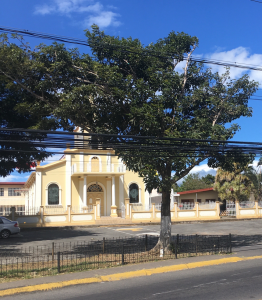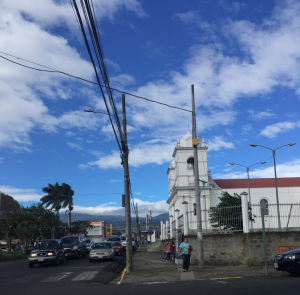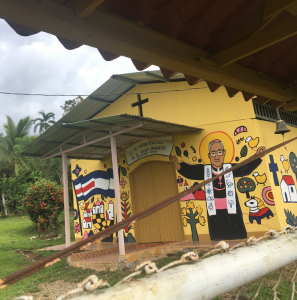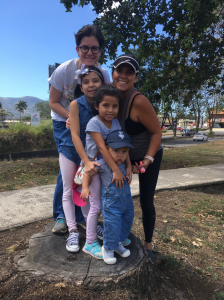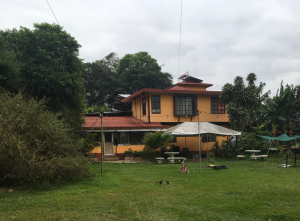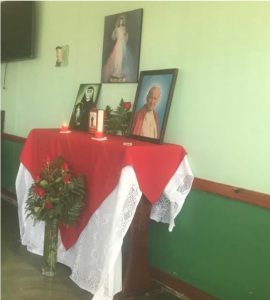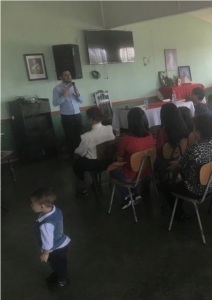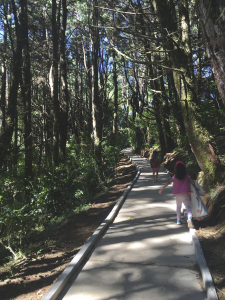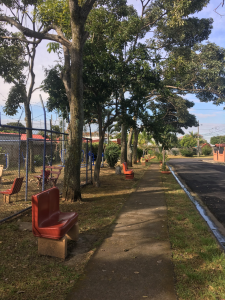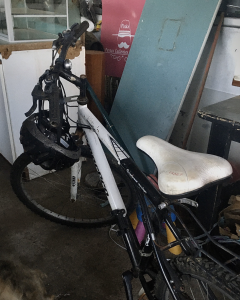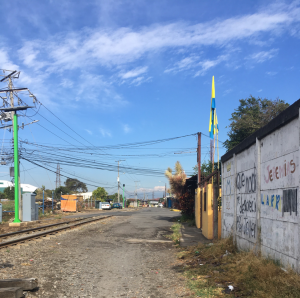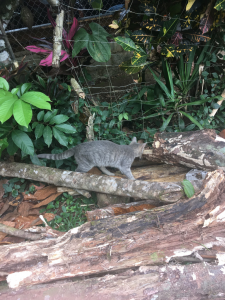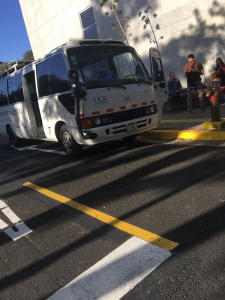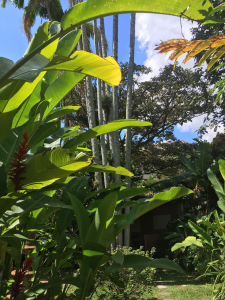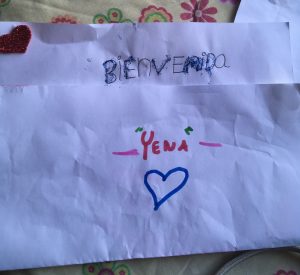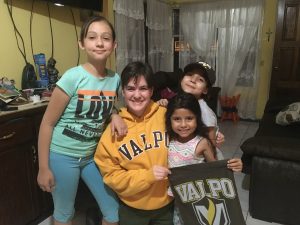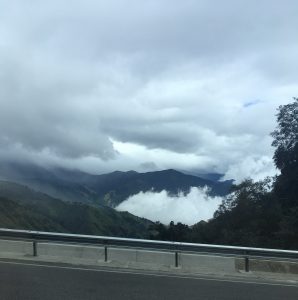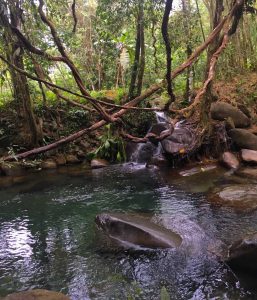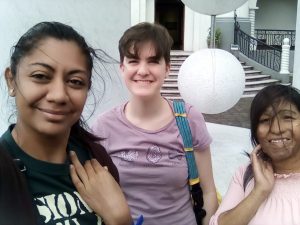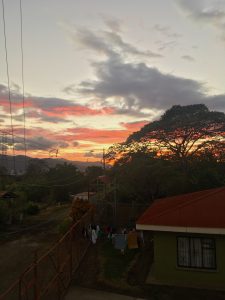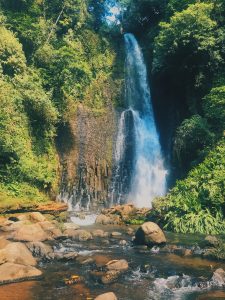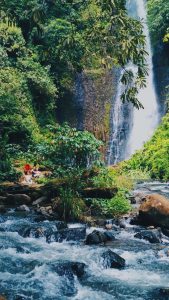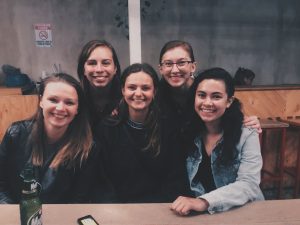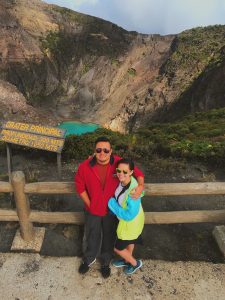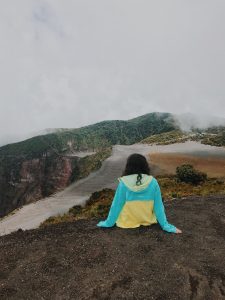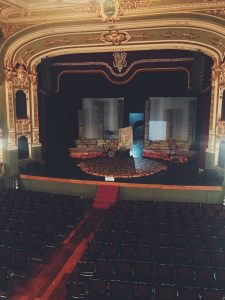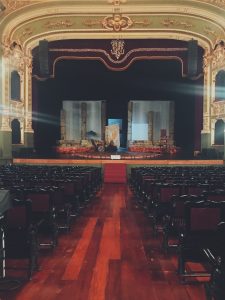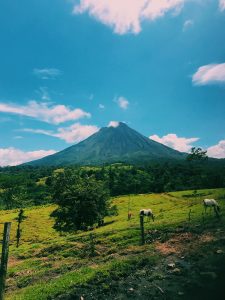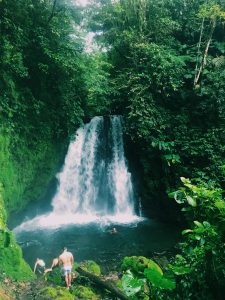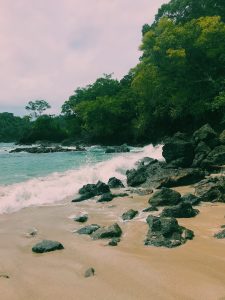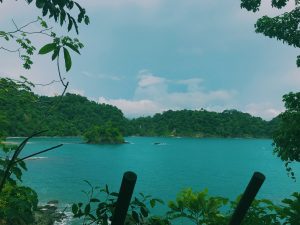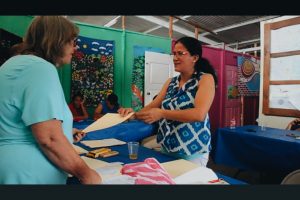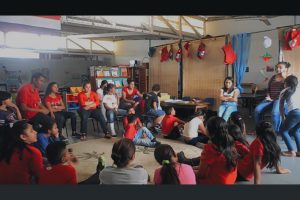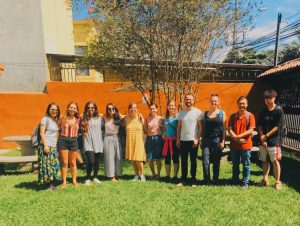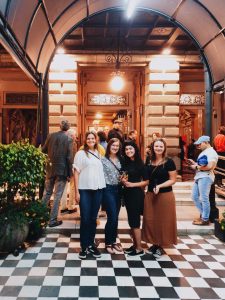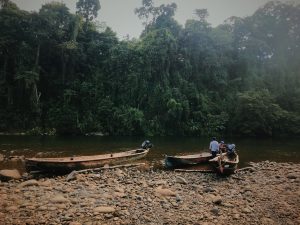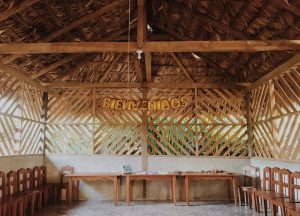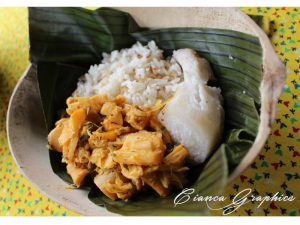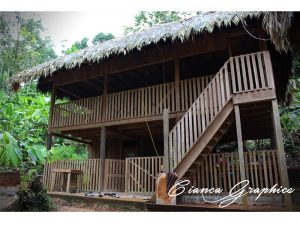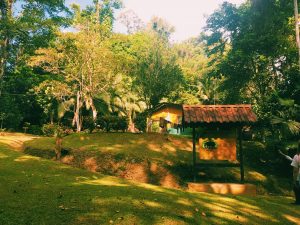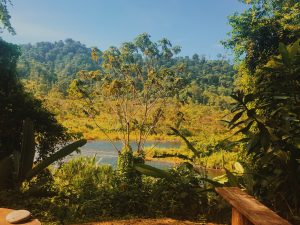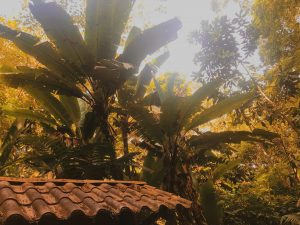Name: Jenna Johnston
Location: San José, Costa Rica
Since my time in Costa Rica was cut short, for 3 of my 5 remaining blogs, I’m publishing stories based around the academic research and personal interviews I conducted in January and February for my Central American history class.
I interviewed Doña Eva*, a woman from El Salvador, about Vos Sos el Dios de los Pobres, a song from the Nicaraguan Peasant Mass. Our interview took place during a night of singing and sharing Latin American protest hymns, including this song, together. Vos Sos el Dios de los Pobres (“You are the God of the poor”) was written by Carlos Mejía Godoy, and comes from his Misa Campesina Nicaragüense (Nicaraguan Peasants’ Mass). The mass was written in the mid-1970s, and was used as a religious protest song in Nicaragua and El Salvador throughout the 1980s, when El Salvador was in a civil war. Leftist protestors and guerrillas fought against a US-backed military government that was characterized by mass death and disappearance, torture, and targeting of Catholic clergy (Michelsen 2020). Vos Sos has a rich history, is part of a radical theological movement, reflects Latin American culture, and has intense personal significance to Central Americans, reflected in Eva’s testimony.
Vos Sos el Dios de los Pobres was composed as the entrada (entrance song) for the Nicaraguan Peasants’ Mass, published in the mid-1970s by Carlos Mejía Godoy (Vigil and Torrellas 1988). Following the Second Vatican Council and Latin American council meetings in the 1960s, Catholic composers began to write masses in the language and context of everyday people. The importance of Mejía Godoy’s life and music to Nicaraguan revolutionary movements cannot be overstated. Former Vice President of Nicaragua Sergio Ramirez described Mejía Godoy: “The [Sandinista] revolution owes everything to Carlos. He put the soundtrack to the revolution” (Salinas 2018).
Mejía Godoy is considered by some to be the most popular singer and composer in Nicaragua, famous for revolutionary and religious songs that came from Latin American folk traditions (Gioconda 2002). Before writing the Mass, Mejía Godoy had been in Catholic seminary in Costa Rica, but dropped out because it was run by “backwards” (atrasado) Spanish elites (Zeledón 2001). The mass was banned in Nicaragua by both the Church and the government following its publication because of its humanization of God and its Marxist undertones (Gurza 2003; Perez 2014; Zeledón 2001). Due to the political nature of his songs and their use in protests, Mejía Godoy has spent part of his life in exile. Many of his songs, including those in the mass, have more religious connotations and are less explicitly revolutionary. However, several songs of the album Guitarra Armada (“Armed Guitar”) give direct instructions on how to operate rifles that protestors stole from the Nicaraguan National Guard in the late 1970s. Mejía Godoy recently left Nicaragua again, fearing for his life because of his open personal and musical defiance of President Ortega’s regime (Salinas 2018).
The musical style of Vos Sos el Dios de los Pobres is distinctly Nicaraguan. Mejía Godoy said he tried to incorporate rhythms and instruments from all parts of Nicaragua into the mass, just as he used his authentic conversations with Nicaraguan common people as inspiration for its lyrics (Zeledón 2001). Even as a newcomer to the genre, the language, and the song, at the music night, I found the chorus’ melody and harmonies easy to pick up in the moment. I was able to sing along in full voice by the time the last few choruses came around. The song’s inviting tone and quickly learnable chorus has likely enhanced its popularity and use as a protest song.
Several words, phrases, and themes stuck in my head while reflecting on the lyrics to Vos Sos el Dios de los Pobres. The first and most obvious word that sticks out is the very first word of the song: vos. Unlike more traditional hymns and translations of the Bible, this song does not use the formal usted to refer to God. God is vos, the Latin American informal “you” used for everyday peoples. This relates to a friendly image of God, radically different from traditional paternalistic conceptions. The emphasis on God’s struggle also points out God’s humanness. The word “struggle” (luchás) is directly used in the first verse, to describe God struggling in the field and the city. Within the song, it is God’s nature as a worker that gives ordinary people the power and ability to speak directly to God.
While Vos Sos is not in the Misa Popular Salvadoreña (Salvadoran Popular Mass), it has still been sung in El Salvador in worship and other settings from the late 1970s onward (Peterson 1997), which explains the personal connection that Eva and other Salvadorans have to the song. When I asked Doña Eva what Vos Sos el Dios de los Pobres says about God and humanity, she was overwhelmed by such a big question: “With this song you can say a lot.” The first point she focused on was that the song elevated and praised work that was traditionally viewed as “low” or inferior. She said the song is “a new way of looking at work” because it dignifies and admires people simply for working. The song reflects the culture of everyday working Central Americans, which relates to what Ernesto Cardenal, a Nicaraguan priest, said: the mass is not neutral — it is a mass against the oppressors (Zeledón 2001).
In addition to giving a fresh perspective on the value of work, the song also reframes God’s relationship to man. Doña Eva talked about how Vos Sos el Dios de los Pobres shows God as a part of humanity, one who is walking and working alongside us. Drawing from liberation theology, the song paints a picture of God based on Jesus’ life: a God who is an integral part of humanity.
In many of Carlos Mejía Godoy’s other works, the social messages and calls for change are explicit. The social problems that Vos Sos highlights are more subtle, but are rooted in the concerns of liberation theology. God works and struggles in the lyrics of this song, but God is not sad or angry — God only has one mild complaint, and it’s about the flavor of shaved ice, not about social issues. Yet the focus on God’s many different jobs, some of which are physically taxing and all of which are low paying, highlight and center the struggles of the poor within the narrative. The mass and its opening song hold theological importance as an advancement in the continued centering of the poor within the Christian fight for justice.
When asked how singing Vos Sos made her feel, Doña Eva expressed a wide range of emotions. In El Salvador and when first arriving as a refugee in Costa Rica, she had fear associated with singing the song, but the fear always gave way to passion, a sense of pride in her identity, and adoring love for God. Singing the songs of the mass allows her to “desaugándome” (“let it all out”). The rich historical background, social and theological implications, and impact of words and themes of Vos Sos el Dios de los Pobres contextualize these responses, enriching the song’s spiritual significance today.
*Name changed to protect privacy.
References cited in this story can be viewed here: https://bit.ly/2WTKHfT
